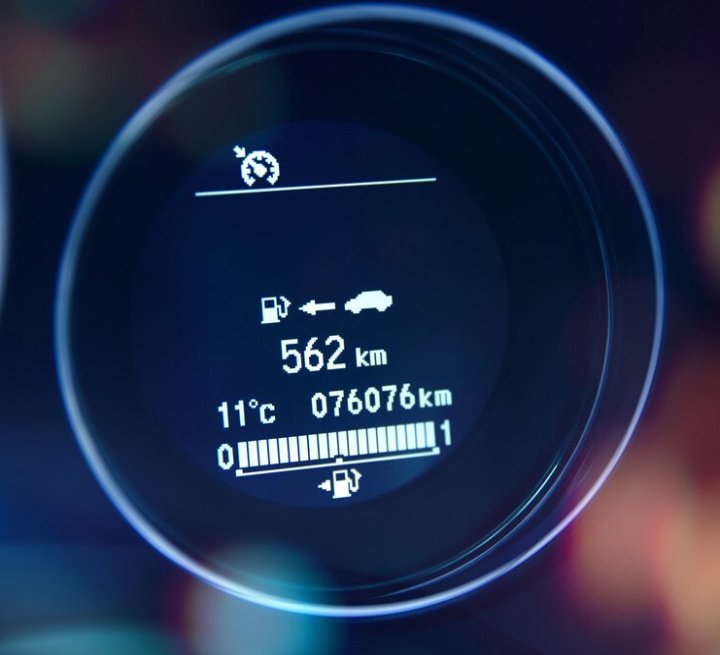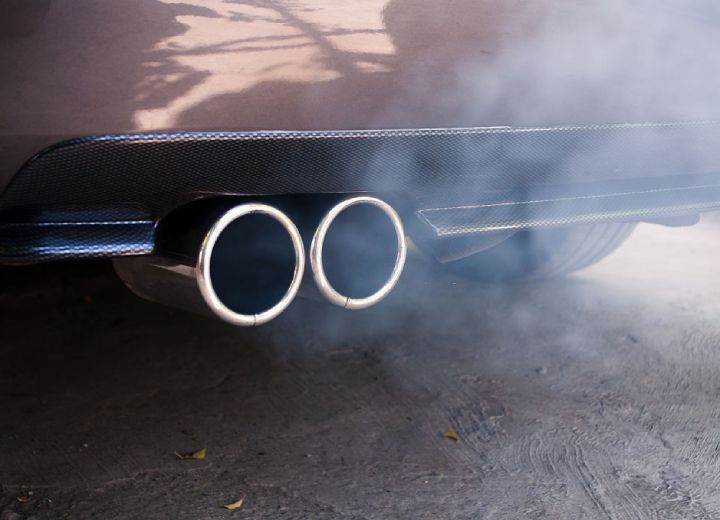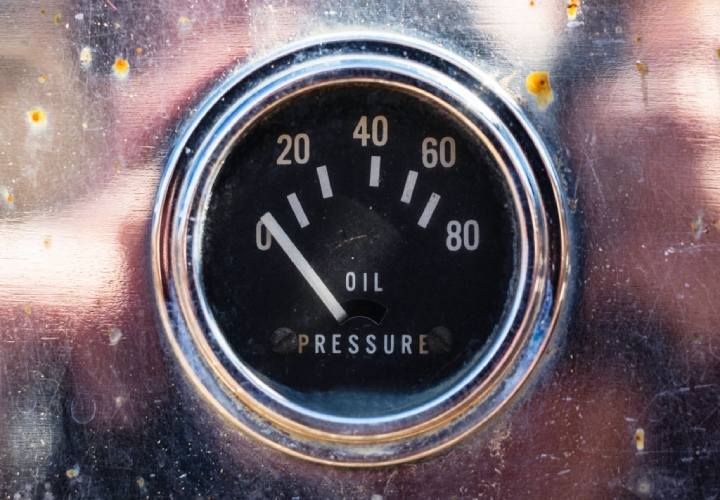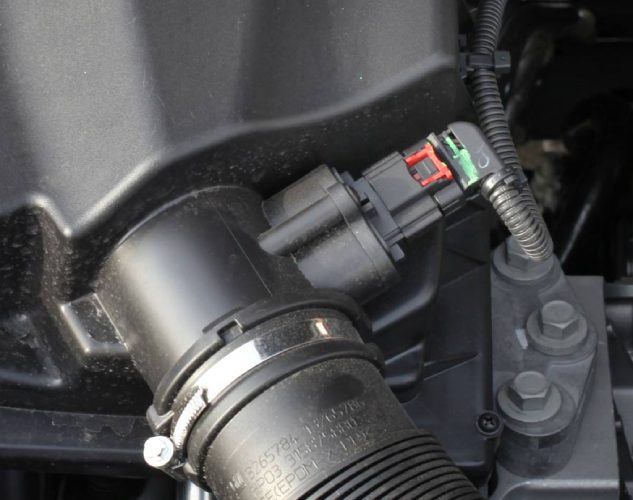A chassis control system error message can be a frustrating experience if you are late for work. It usually appears when you press the Start Engine button. The engine fails to crank. You can wonder what’s wrong with your car.
Chassis control system errors commonly appear on Nissan Rogue and other car models equipped with this technology. You see it when the chassis control module in the car has detected a fault or problem in any of the three systems. It consists of the active trace control, active engine brake, or active ride control system.
But what causes the chassis control system error, and how do you fix it? Read on for detailed information about this problem!
What Is the Chassis Control System Error?
Before understanding the chassis control error, we should dig deeper into this system and its role in Nissan cars. A chassis control system is a new technology specific to Nissan. It includes active trace control, active engine braking, and active ride control.
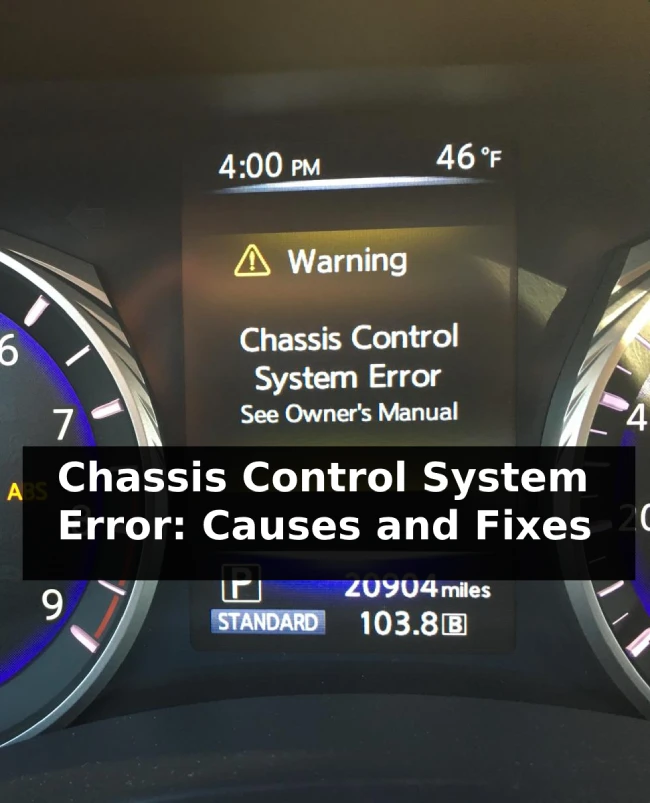
The chassis control system gets data from sensors such as wheel speed sensors. It also receives information such as yaw rate, g-forces, and driving forces from steering, acceleration, and braking inputs. Your car’s engine control unit (ECU) then uses that data to control engine braking and transmission system to improve driveability. The technology enhances cornering, braking, and your comfort behind the wheels.
Active Trace Control
This intelligent system monitors your driving habit in real-time, tracking the complex maneuver you are attempting at any time. It uses the information gathered to control braking actions behind the scene.
The active trace control system intervenes to improve handling performance, ensuring the vehicle is always stable. This system keeps the car steady when cornering, reduces lag during steering and makes the vehicle stable during quick lane changes. In other words, it turns you into an experienced driver.
Active Engine Brake
An engine can effectively slow your vehicle downhill without applying brakes. You should know by now if you usually shift to lower gear when driving down a steep slope. It is one of the ways of leveraging the engine’s ability to reduce wear on brake pads.
An active engine brake system acts behind the scenes by applying small brake pulses when cornering to help you trace corners better. It shortens the overall braking pressure and makes braking seamless. Once again, the system monitors your activity behind the wheel.
Active Ride Control
Stepping on the brake pedal pitches the car down, while pressing on the gas pedal pitches it upwards. These up and downward movements can cause discomfort, especially when driving on uneven road surfaces. That is where the active brake ride control comes in.
The active ride control system raises or lowers the vehicle to cancel the pitching and dipping effects when you press the gas or brake pedals. This system also works on straight roads and corners by adding or subtracting the engine torque as appropriate to make the ride more comfortable.
A chassis control system error message appears on the message center if there is a fault. It can be from active ride control, active engine braking, or active trace control systems. It is a common problem in a Nissan Rogue or any other model fitted with this technology.
Related content: Car Is Slow to Start, but Battery Is Fine – 7 Causes
Why does it happen? When does it happen?
The chassis control system is a relatively new technology. That is why its error catches most drivers by surprise. Fortunately, we can now get the details of its causes and when it happens.
Most Nissan Rogue drivers report the chassis control system error when they press the Start Engine button. But what causes it? The following are the most common culprits:
Blown Fuse as A Result of Dead Short
Nissan Rogue has a 10A fuse in the fuse box that can cause a dead short when the ignition button is pressed. That usually happens in the engine harness that goes to the body control module (BCM). This fuse also protects the chassis control module.
If this fuse blows out, the control module error appears on the dashboard. The car does not change gears from the park, and you lose power steering. Replacing the fuse is the only solution to this problem. However, what causes it to blow out is yet to be determined.
Bad Tire
A defective tire affects stability and traction. It can easily slip or slide out of control under extreme road conditions. As mentioned, the chassis control system depends on the input from wheel speed sensors and other variables. The entire system operation gets compromised with erroneous data from the sensor due to a bad tire.
The chassis control module can read that as a fault and sets an error code, leading to the error message shown on the information display. Check all your tires and change the damaged one or the entire set if worn out. The error should reset itself after this fix.
Loose Battery Connection/Corroded Terminals
Your car’s battery powers all systems and accessories before starting the engine. Loose battery connections or corroded terminals mean there is an open circuit. The electric current needed for the proper operation of the control modules and sensors becomes unavailable.
Check the terminals and remove any corrosion. Also, trace the battery connections to ensure nothing is loose or disconnected. Try starting the car again by pressing the Start Engine button. If the engine doesn’t crank, find the next possible cause.
Weak Car Battery
The engine motor draws a lot of power to crank the engine. If the battery is weak, it may not provide enough power needed to start the car. The chassis control module will show an error message due to a failed attempt to start the engine.
It uses a digital multimeter to measure the voltage across the battery terminals. A fully-charged car battery should read 12.6 volts or more. Recharge the battery using an external charger if you find a lower voltage reading. Alternatively, you can bring a second battery for jump-starting the car.
Low Transmission Fluid
Many Nissan Rogue owners have reported the cause of the chassis control system error message as low transmission fluid. This car uses a continuously variable transmission system to transfer engine power to the wheels. A proper fluid level should be maintained for its operation, lubrication, and cooling.
Low fluid levels lead to low pressure in the CVT, which leads to slower gear engagement when shifting gears. The chassis control module detects that transmission problem as a fault. It then shows the error message to the information display to alert the driver.
Check the transmission fluid level in your Nissan Rogue’s CVT and top it up if necessary. It should fix the problem and clear the error message.
Take your car to the auto repair shop or call an experienced Nissan mechanic to diagnose it through OBD. The scanner should get the error codes to pinpoint the cause of the chassis control system error message.
Related content: Battery Light Comes on When Idle – Causes & Fixes
Benefits of Chassis Control System
The chassis control system is a modern technology in Nissan Rogue and some select Nissan cars. It has many benefits that improve your driving experience on all road types. The chassis control will flash on the information display when it is in action. At that time, you enjoy the following benefits.
Better Rider Comfort
Improved comfort in the cabin is the number one benefit of the chassis control system in the Nissan Rogue. It works to reduce vibrations and up and down movements despite the road conditions. The driver and passengers will not be thrown out on their seats when cornering or feel slammed forward under heavy braking.
The chassis control system helps you, the driver, to make gentle movements and keep the car stable.
More Driver Confidence
Driving on uneven countryside roads is a headache for many drivers because stabilizing the car is challenging. Negotiating sharp bends also requires skills that most drivers do not have. But with the chassis control system active, you can remain confident knowing that you have an assistant behind the scene.
Improved Tires Lifespan
The chassis control system ensures transaxle stability, ensuring even tire tread wear. Without it, only one side of the tire takes much weight and pressure, especially on rough roads. That unbalanced wearing causes premature tire failure. Overall, the chassis control system makes getting the most out of your tires.
Related content: C0561 Chevy – All the Possible Causes, Symptoms, and Fix Guide
Other Signs of Failing Chassis Control System
The chassis control module error is a sign of a failed system. The engine fails to start, and you cannot drive your car. But before that, your vehicle shows symptoms of the imminent problem, which include the following:
- Sagging suspension
- The suspension compressor is always either ON or OFF
- Rougher riding experience than usual
- The front end goes down when braking
- Steering is more difficult
- Different tread wear on tires
- Oily or damaged struts
- The car pulls to one side
- The vehicle bounces after a bump
- Weird noises coming from your compressor
- Increased rugged driving experience
Don’t wait until the chassis control system fails. Take your vehicle to a qualified mechanic or Nissan dealer if you experience the above symptoms for further diagnosis. This is a crucial system in your car that needs immediate attention when faulty or failing. Don’t take any chances!
In Summary
In conclusion, this error is specific to Infiniti and Nissan models, but it is possible to appear on other makes too. Diagnosing the issue can be tricky, hence for most people, it is recommended to visit their local mechanic.
Brian is an auto technician who writes DIY repair articles and creates how-to videos for MechanicAsk. He focuses on common repairs like brakes, oil changes, and lighting. Brian draws on his 5 years of dealership experience to explain repairs in an easy-to-follow manner, even for novice do-it-yourselfers. His technical articles always include detailed tool lists, supply checklists, and visual guides.

